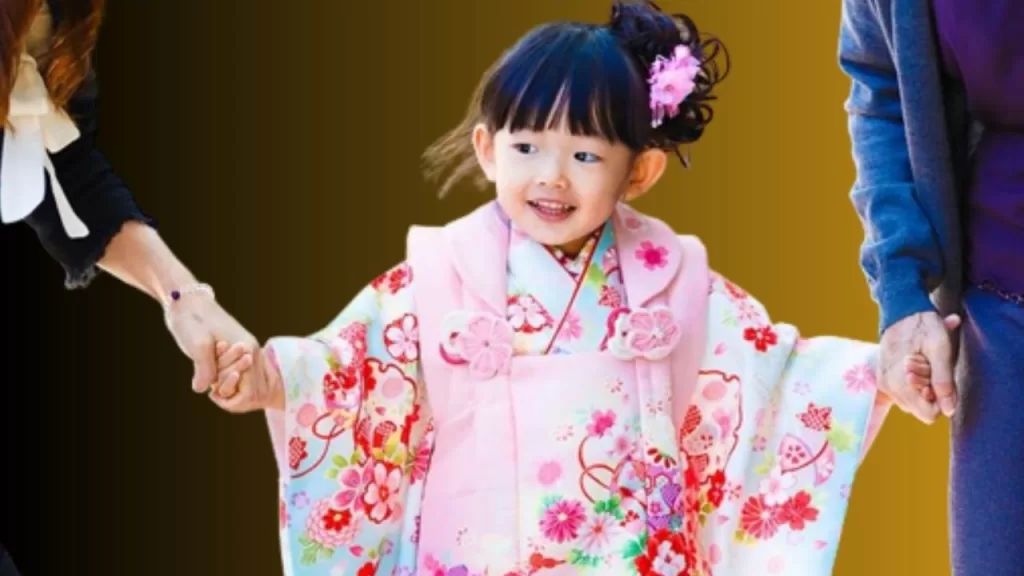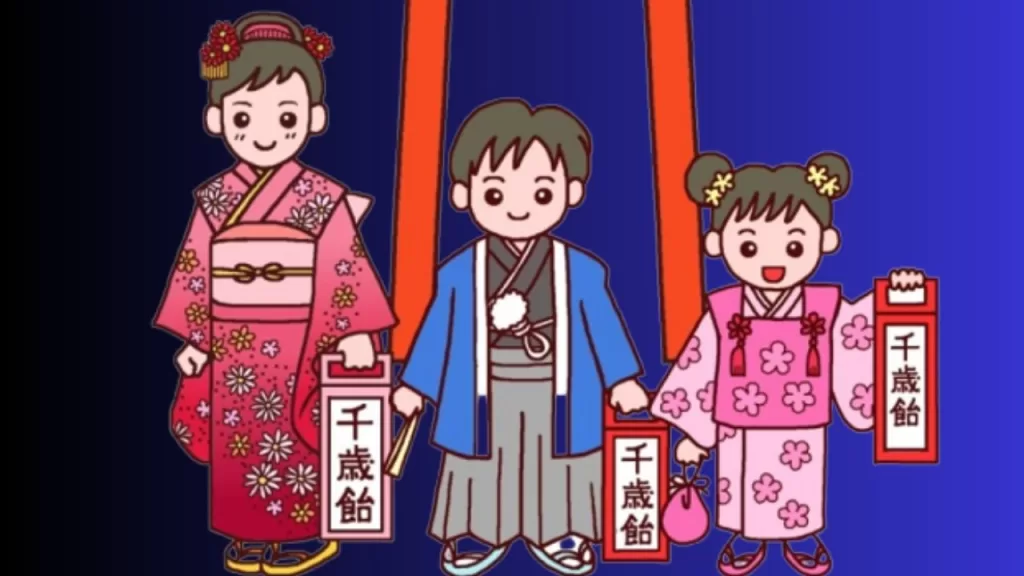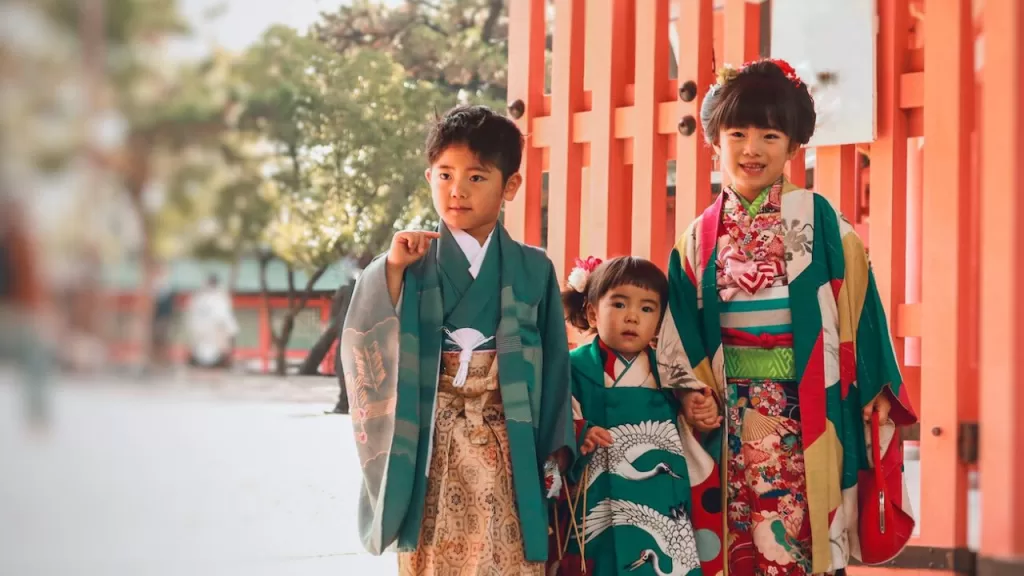Shichi-Go-San: Age-old Tradition Honoring Japanese Children’s Growth and Well-being
Shichi-Go-San
Participate in the joyous Shichi-Go-San Festival, one of November’s most cherished Tokyo events, celebrating children’s growth.
Celebrating Specific Milestones: The Significance of “7-5-3.”
Shichi-Go-San, a significant cultural event in Japan, is a traditional celebration capturing the growth and well-being of children at 3, 5, and 7 years old. The ages represent key milestones in children’s lives and hold unique significance, drawing upon cultural traditions entrenched in Japanese society.
For 3-year-olds, boys and girls celebrate “Kamioki (髪置き),” during which they are allowed to grow their hair, previously kept short, symbolizing their transition into childhood. Five-year-old boys participate in “hakama (袴着),” where they begin wearing Hakama – a momentous occasion signifying their initiation into adulthood. Finally, seven-year-old girls partake in “obitoki (帯解き),” signifying the start of their journey into womanhood as they commence wearing Obi tie with their Kimono.
Delving into the Past: Historical Roots and Evolution
The roots of Shichi-Go-San are believed to date back to the Heian period (794–1185), predominantly within the royal and aristocratic circles. It gradually permeated the samurai class during the Edo period (1603–1868). By the time the Meiji period (1868–1912) arrived, it was widespread across Japanese society in a format much akin to today’s practice, albeit with minor modern modifications.
The primary focus of this celebration has remained unchanged throughout different eras – showing gratitude for children’s health and praying for their continued growth and well-being.
Date Selection: Why November 15?
Though Shichi-Go-San is traditionally celebrated on November 15 with flexibility around timing, the date encapsulates several layers of significance. The day is considered fortunate per Chinese philosophy due to its tie with odd numbers deemed auspicious and because it falls on ‘kishukunichi’ or ‘the day demons stay at home.’
This tradition notably incorporates elements from other cultural contexts, including Tsunayoshi Tokugawa’s legacy, which designated this day for celebrating his son’s coming of age. Thus evolving over centuries, November 15 remains the principal date even today.

Elements of Celebration: From Shrine Visits to Sweet Treats
Parents accompany their young children dressed in resplendent kimonos to local Shinto shrines or temples on Shichi-Go-San. Following ceremonies conducted by Shinto priests that sometimes include a dance performance by Miko (巫女) or shrine maidens, families give thanks for their children’s health.
On this special day, children receive gifts, including protective amulets known as Omamori and Chitose-Ame candy sticks that symbolize longevity. The candy sticks often come in red & white packaging, whose colors symbolize fortuity. Notably, modern-day celebrations also typically include shared family feasts and photo sessions capturing these memorable moments.

Shrines Across Japan Host Celebrations
Although celebrations occur across numerous shrines in Japan throughout November, some prominent venues include the Meiji-Jingu shrine near Harajuku in Tokyo, the Hie-Jinja shrine located in Akasaka, Tokyo, and the Tomioka Hachiman-gu shrine situated in Koto ward of Tokyo. Other notable places rich in festivities are Sumiyoshi Taisha, based south of Osaka, and Heian-Jingu, in northeast Kyoto.
With its origins steeped deep within Japanese history and cultural beliefs, the Shichi-Go-San festival has weathered centuries resonating strongly even today as it celebrates childhood milestones. Importantly it embodies societal gratitude towards divine powers for imbuing life with health & happiness – a thread eternally linking generations.
Celebrate the special milestones of young ones at the Shichi-Go-San Festival, coinciding with the breathtaking Hachioji Ginkgo Festival.
